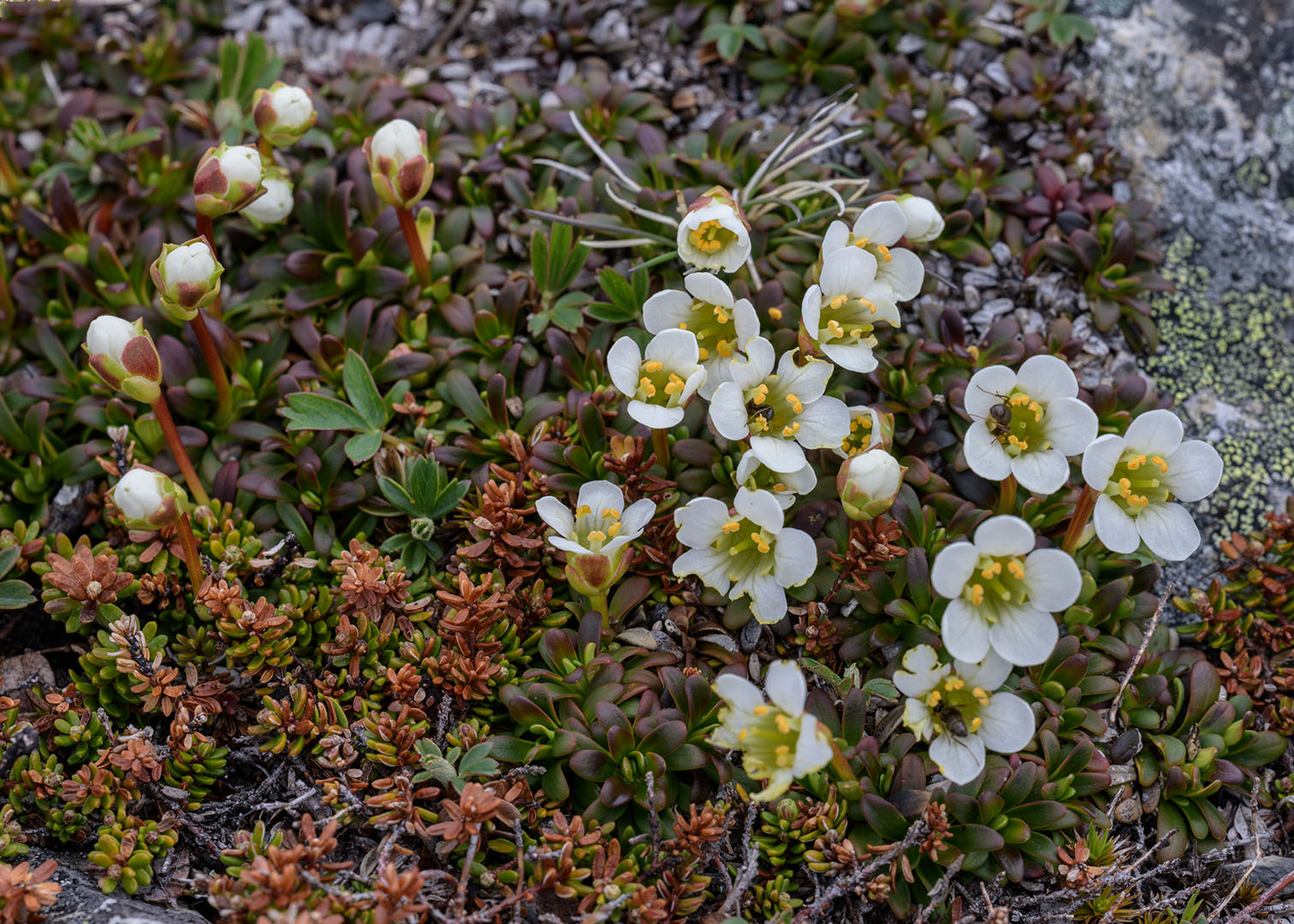

The eye-catching alpine flower Diapensia lapponica is a target species found on many of the tallest peaks in the Northeast.
AMC’s Northeast Alpine Flower Watch is a community science -driven research project investigating how alpine plants and ecosystems are responding to climate change—and we need your help! By taking photos of plants in high-elevation areas with iNaturalist, you’ll enable us to detect changes in the timing of key plant lifecycle events, like flowering and fruiting, and uncover essential information needed to protect these rare ecosystems.
The alpine tundra is a stunning world that awaits all who venture to the top of the Northeast’s highest peaks. Here you’ll find remarkable plants found nowhere else in the region, each adapted to the harsh weather conditions many recreationists know all too well. But, as the climate warms and tree line moves upslope, these isolated “islands” of arctic plants have nowhere left to go, making them a high priority for research and conservation.
In partnership with the Adirondack Mountain Club in New York, the Green Mountain Club in Vermont, and Baxter State Park in Maine, AMC operates the Northeast Alpine Flower Watch to better understand how warming conditions are impacting alpine flowers. This initiative is an extension of AMC’s long running Mountain Watch program, which has relied on hikers and AMC staff to monitor plants in the mountains since 2004. Getting involved is easier than ever with iNaturalist, and by taking photos of flowers on your hike every spring and summer, you can help too!
About iNaturalist
iNaturalist is a tool that crowdsources plant and animal observations through a free app on your phone or tablet. Our project uses it to focus on the flowering season of alpine plants in the Northeast.
To Get Started:
- Download the free iNaturalist app and create an account.
- Turn on your phone’s location. This lets you share the location of the plants you photograph with the iNaturalist community.
- Take photos of flowers, especially our target species, using the iNaturalist app. Snap a photo of the whole plant, if possible, and a close-up of its flowers or fruit. It’s best to take photos in the iNaturalist app because this ensures that more accurate location data is logged. If you don’t have cell service, you can still take iNaturalist observations; the app can upload them once you return to service.
- Join AMC’s iNaturalist projects. By joining the “Northeast Alpine Flower Watch” project, you can streamline your contribution to AMC’s research and get updates through project journal posts. (If you’re not hiking above tree line, you can learn about our Appalachian Trail corridor project here.) Be sure to select ‘allow researchers to see coordinates’ when you join the project to enable us to use the data you’ve collected. Observations not posted to our project are still accessible for research, so snap away!
Don’t forget to check back in on your iNaturalist submissions and learn about what you’ve spotted. iNaturalist has built-in identification technology, as well as a strong community of enthusiastic fellow naturalists who can help confirm a species and move your observation to “Research Grade”. This allows AMC scientists and other researchers to use it in our work.
The more photos we take, year after year, the more we can learn about the impacts of climate change in the alpine zone, and how we can best steward these remarkable places!
Feeling competitive? Check out our new iNaturalist bingo card and compete with your friends and family to snap all 16 species. This bingo card includes species from both the Northeast Alpine Flower Watch project and our Appalachian Trail project, so get ready for an adventure!
Learn More:
Help AMC Scientists Study Climate Change’s Effect on Alpine Plants
Help track flowers and fauna along the Appalachian Trail with iNaturalist
Get to Know These 6 Common Alpine Plants and Flowers in New Hampshire
Northeast Alpine Flower Watch StoryMap